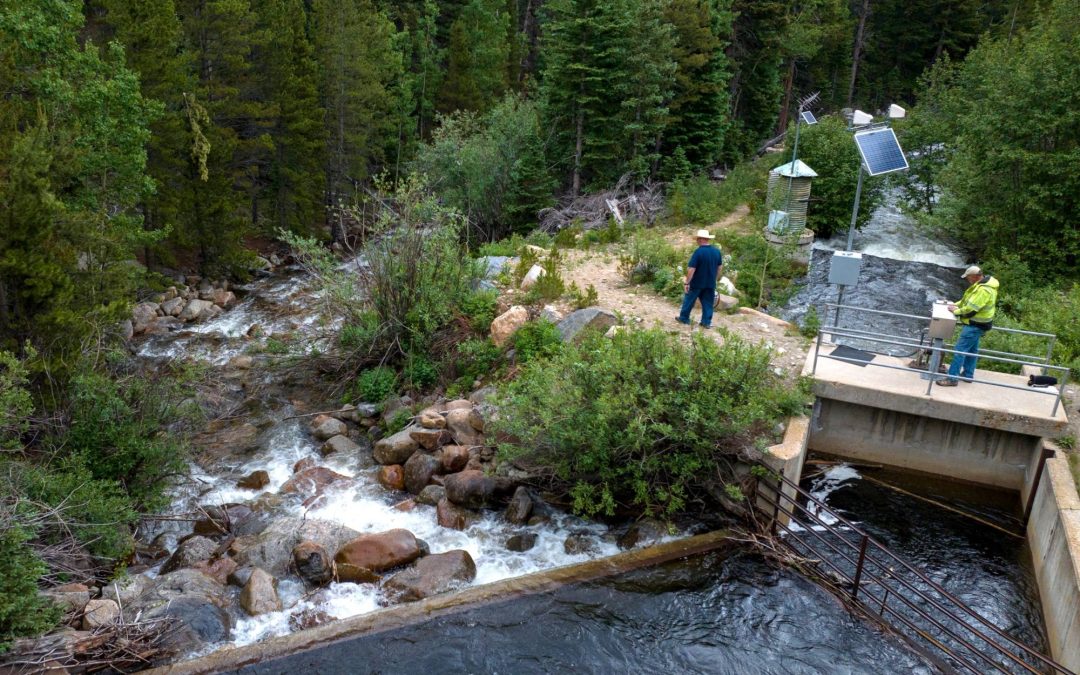The federal government has planned since 2022 to spend $450 million on water projects in four Western states, including Colorado. Last week, water officials finally learned which projects are eligible — and they’re planning to dream big.
The funding is part of the federal government’s plan to address the impacts of drought in the overstretched Colorado River Basin. It will, in part, be used for projects that restore habitats and ecosystems or offer other environmental benefits, according to an announcement from the Bureau of Reclamation July 22. A second application period, which opens later this year, will focus on long-term water conservation efforts using the same bucket of funds.
The door seems to be wide open for larger-scale projects — with more flexibility and fewer hurdles for applicants, several groups said.
“Normally we’ll see somewhere in the ballpark of $20 million to $30 million annually for ecosystem restoration work through WaterSMART for the Upper Colorado River Basin,” said Alex Funk, director of water resources and senior counsel at Theodore Roosevelt Conservation Partnership. “Never have we seen $450 million come online all in one [request for proposals].”
The influx of money is headed for Colorado, New Mexico, Wyoming and Utah, the four states in the Colorado River’s Upper Basin. The river basin spans seven Western states, the lands of 30 tribal nations and two Mexican states. There, the future water supply for 40 million people has been compromised by two decades of drought, a changing climate, and overuse.
The funds come with a few strings attached. Only public entities, like governments and tribal nations, can apply. They can partner with other groups, like environmental advocacy nonprofits or nongovernmental organizations, which cannot apply independently.
The criteria seem suited to make big ideas happen, several water experts said. The funding minimum is $300,000. Many other grants max out at $300,000, which means projects are smaller in scope. Organizations will have five years to spend the money.
With applications due in mid-October, many organizations are in the early stages of deciding which projects to prioritize. Funding announcements are expected in spring 2025.
The Ute Mountain Ute Tribe is looking at opportunities to improve operations at its farming enterprise and water infrastructure, said Peter Ortego, director of the tribe’s Department of Justice.
The Southwestern Water Conservation District is already planning meetings with local partners to identify multipurpose projects that could receive funding. That could mean boosting a river’s flows or improving conditions for sensitive fish species.
In order to meet the funding minimum, a conservation group might choose to align its relatively inexpensive stream restoration project with a more expensive project to upgrade a concrete diversion gate for farmers and ranchers, for example. A recent project that helped fish and ranchers near Maybell is a good example of this type of work, Funk said.
“You might see some interesting bedfellows, like ag groups and conservation groups blending their projects together,” he said. “I think that could be really interesting in terms of long-term relationship development.”
Typically, a watershed is broken into smaller projects to fit requirements for smaller grants, which can lead to disjointed work, Funk said. The new funding could allow it to tackle a whole river segment at once or do work in both headwaters and valleys.
In the Gunnison Basin, the funding could be used to build artificial beaver dams, which slow the speed of water, attract beavers and restore wetland ecosystems higher in a watershed. That work could be paired with downstream projects, like improvements for irrigation infrastructure, Funk said.
Or, organizations could focus on the Animas River in southwestern Colorado, which turned yellow in 2015 when an upstream mine released toxic wastewater into the river.
The funds are also easier to access. Many grant programs require applicants to come up with matching funds, which can be difficult for rural communities, small organizations and tribal nations. These funds do not have a match requirement.
“Match funding can be hard to secure,” said Aaron Derwingson, Colorado River Program water projects director for The Nature Conservancy. “With the urgency a lot of us are feeling in the basin with the water situation and the scale of the work that needs to be done, it’s really encouraging to see this great downpayment of funds.”


 Print
Print